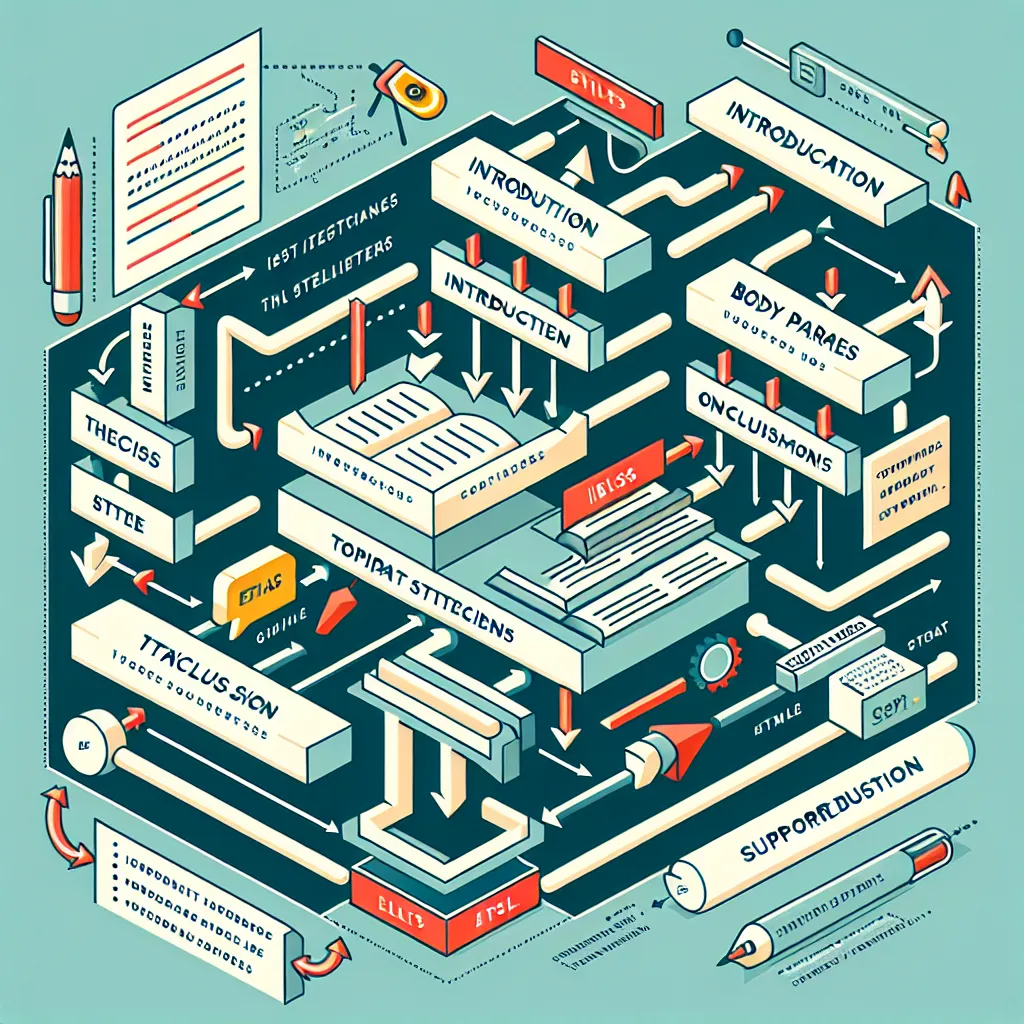Are you preparing for the IELTS exam and struggling with idea development in Writing Task 2? You’re not alone. Many test-takers find it challenging to generate and expand on ideas within the time constraints of the exam. In this comprehensive guide, we’ll explore effective strategies to help you develop ideas confidently and coherently in IELTS Writing Task 2.
Understanding IELTS Writing Task 2
Before diving into idea development techniques, let’s briefly review what IELTS Writing Task 2 entails. In this task, you’re required to write an essay in response to a given prompt or question. The essay should be at least 250 words long and typically follows a standard essay structure: introduction, body paragraphs, and conclusion.
 IELTS Writing Task 2 essay structure
IELTS Writing Task 2 essay structure
The Importance of Idea Development
Developing ideas effectively is crucial for several reasons:
- It demonstrates your ability to think critically about complex topics.
- It showcases your language proficiency and vocabulary range.
- It helps you meet the word count requirement without resorting to repetition.
- It contributes to the overall coherence and cohesion of your essay.
Now, let’s explore some strategies to help you develop ideas more effectively.
Strategies for Developing Ideas in IELTS Writing Task 2
1. Brainstorming Techniques
One of the first steps in idea development is generating a pool of relevant ideas. Here are some effective brainstorming techniques:
- Mind mapping: Create a visual representation of your ideas, connecting related concepts.
- Listing: Quickly jot down all ideas that come to mind, then organize them later.
- Freewriting: Write continuously for a set time without worrying about grammar or structure.
2. Using the PEEL Paragraph Structure
The PEEL structure is an excellent framework for developing ideas in body paragraphs:
- Point: State your main idea or argument.
- Explain: Elaborate on your point.
- Evidence: Provide examples or supporting information.
- Link: Connect back to the main topic or transition to the next paragraph.
3. Incorporating Examples and Personal Experiences
Examples and personal experiences can significantly enhance your essay by:
- Making abstract concepts more concrete and relatable.
- Demonstrating your ability to apply ideas to real-world situations.
- Adding authenticity and depth to your arguments.
When using examples, ensure they are relevant, specific, and clearly explained.
4. Exploring Cause and Effect Relationships
Analyzing cause and effect can help you delve deeper into a topic:
- Identify the causes of a particular issue or trend.
- Discuss the short-term and long-term effects.
- Consider potential solutions or interventions.
This approach shows critical thinking and helps you explore multiple aspects of a topic.
 Cause and Effect Diagram
Cause and Effect Diagram
5. Considering Different Perspectives
Presenting multiple viewpoints demonstrates a well-rounded understanding of the topic:
- Discuss arguments for and against a particular stance.
- Explore the issue from different stakeholders’ perspectives.
- Analyze the pros and cons of various solutions or approaches.
This strategy showcases your ability to think critically and objectively about complex issues.
6. Using Comparison and Contrast
Comparing and contrasting ideas can help you develop your arguments more thoroughly:
- Highlight similarities and differences between concepts, approaches, or situations.
- Use transition words like “similarly,” “in contrast,” or “on the other hand” to guide the reader.
- Ensure that your comparisons are relevant and contribute to your overall argument.
7. Elaborating with the “5 Ws and H” Technique
When expanding on an idea, consider addressing the following questions:
- Who is involved or affected?
- What are the key aspects or components?
- When does this occur or apply?
- Where is this relevant or observed?
- Why is this important or significant?
- How does this work or impact the situation?
This technique ensures comprehensive coverage of your ideas and helps you avoid superficial explanations.
Common Pitfalls to Avoid
While developing ideas, be mindful of these common mistakes:
- Overgeneralization: Avoid broad, unsupported statements. Always provide specific examples or evidence.
- Repetition: Don’t simply restate ideas; instead, expand and deepen your analysis.
- Irrelevance: Ensure all ideas directly relate to the essay prompt and contribute to your overall argument.
- Lack of coherence: Use appropriate transition words and phrases to connect ideas smoothly.
Practice Makes Perfect
Developing ideas effectively is a skill that improves with practice. Here are some ways to enhance your abilities:
- Read widely on various topics to broaden your knowledge base.
- Practice brainstorming and outlining regularly, even outside of exam preparation.
- Time yourself when writing practice essays to simulate exam conditions.
- Seek feedback from teachers, peers, or IELTS preparation forums.
Conclusion
Developing ideas in IELTS Writing Task 2 is a crucial skill that can significantly impact your overall score. By implementing the strategies discussed in this guide – from effective brainstorming to using the PEEL structure and incorporating various perspectives – you can enhance your ability to generate and expand on ideas confidently. Remember, the key to success lies in consistent practice and a willingness to engage deeply with complex topics. Keep refining your skills, and you’ll be well-prepared to tackle any IELTS Writing Task 2 prompt with ease.
Do you have any specific strategies that have helped you develop ideas in IELTS Writing Task 2? Share your experiences in the comments below, and don’t forget to check out our other articles on IELTS preparation for more valuable tips and insights.




